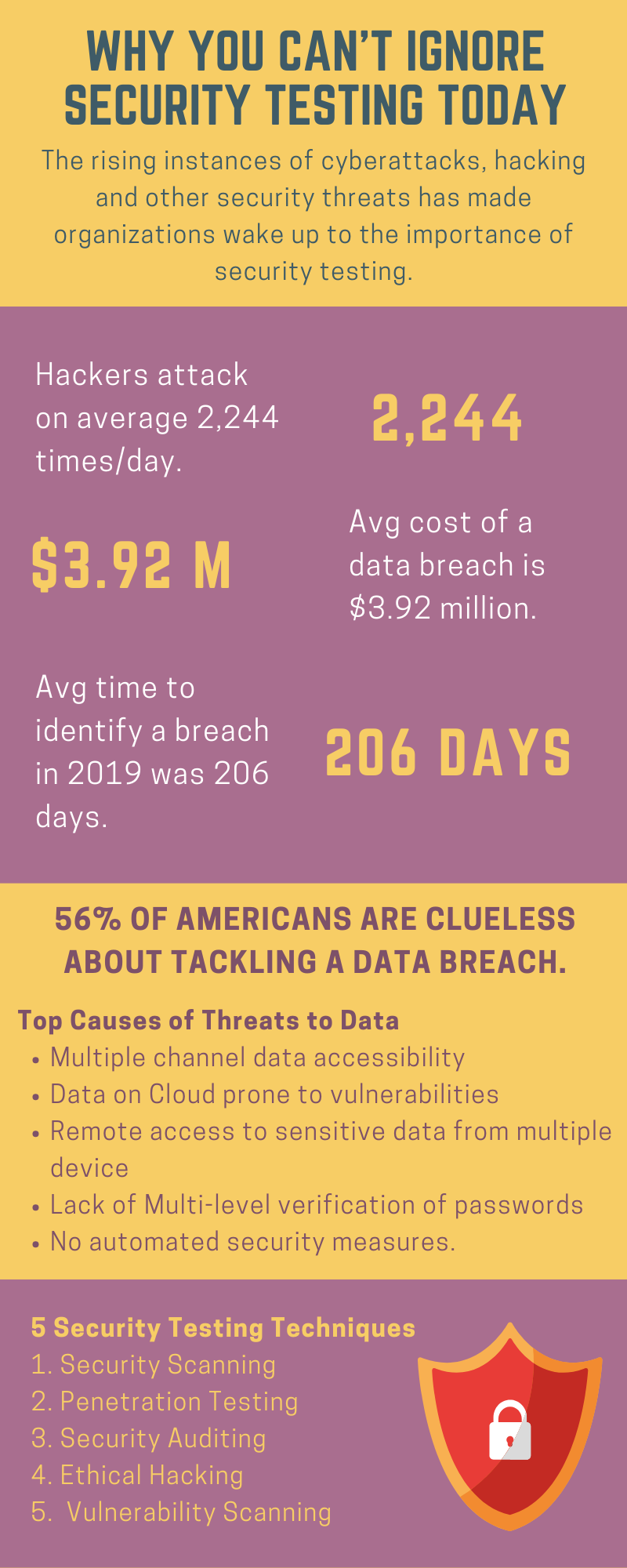The Changing Face of QA and the Role of Security Testing

Security testing can be broadly defined as the process of ensuring that the software application is built to protect the data and information that it processes or stores. It is necessary to ensure that the data of the users is safe from vulnerabilities and threats. Talking about the importance of security testing, today data privacy is increasingly becoming a cause of concern for users, with data breaches happening every minute.
- Hackers attack every 39 seconds, on average 2,244 times a day. (University of Maryland)
- There is more to it than the frequency of cyber threats alone, as one look at the number of records affected and how much it cost, tells us the extent of damage that security threats can result in.
- Data breaches exposed 4.1 billion records in the first half of 2019. (Source: RiskBased)
- Between January 1, 2005 and April 18, 2018 there have been 8,854 recorded breaches. (ID Theft Resource Centre)
- The average cost of a data breach is $3.92 million as of 2019. (Security Intelligence)
So, it goes without saying that data security has today emerged as the must have for every software application. The bottom line is clear: If the software or application is not secure enough, even the most advanced functionalities and fastest performance will be of little use as far as the interest and trust of the users are concerned.
Traditionally, software testing or quality assurance has been primarily about the functionality of the software and whether it is satisfying the pre-defined requirements and specifications that it is expected to. However, with the changing times, the focus has shifted to data security as it is the primary user concern when using a software or application. The idea of a highly secure software lies in the principle of making security a priority during every stage of the software development process, right from planning, development and deployment. It’s a;; about making an effort to understand the attacker’s approach and then be prepared to handle it all effectively.
Interestingly, for most software development organizations, ensuring the security of the software application has been the responsibility of the IT Services and not that of the development or the QA teams. The latter were only involved in ensuring the software met the specifications and requirements as far as the functionalities and performance was concerned.
However, the changing times suggest that organizations shift from this “general practice” and focus on the implementation of security measures throughout the software development lifecycle. This will make it possible to detect vulnerabilities earlier during the lifecycle and prevent the occurrence of any last minute “surprises” that call for desperate measures.
The following infographics highlights the importance of security testing and why the QA teams of today should see security testing in am all new light.

On the hindsight, the implementation of software security is a step towards risk management, which is essential to gain user trust and to create an edge above the competition.
